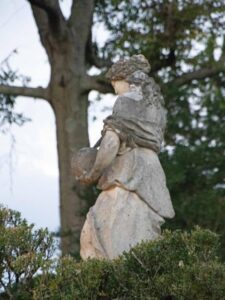It’s on the corner of Center and High streets, a lovely brick building that once housed the town library. The morning sun slants in the windows, creating an airy space within; the afternoon sun glances off this side window, and mirrors the dazzling sun-on-waves found on the river just down the street. There is a grace to this old building, and the town is made more beautiful for it.
But give it more than a passing glance and the neglect cannot be overlooked. The bricks are no longer held fast by mortar; it’s only a matter of time, and not a lot of it, before whole sections are sheared off by the erosive effects of weather and age. No matter how well constructed this building was, regular care and maintenance are necessary to keep it solid and safe for use – regular care that was withheld for at least the past twenty years.
In this building, I see the beauty of craftsmanship, a structure built to serve this town for hundreds of years. In its disrepair, I see a town’s lack of respect for its own inherited history and beauty. There’s a stinginess to withholding basic repair to save a few dollars, and a lack of understanding that routine maintenance is necessary for all things.
I hope the town invests in this building, restoring it to serve as a resource for decades to come. But leaders unwilling or unable to recognize the necessity of routine maintenance aren’t likely to invest in an expensive restoration.
If leaders cannot see the necessity for investing in what is right before their eyes, what are the chances that they will invest in the intangible and sometimes invisible elements that foster communal life – services for the elderly and poor, resources for the very young, and the preservation of the local environment and all that live therein?










